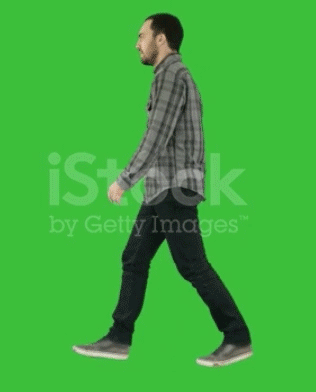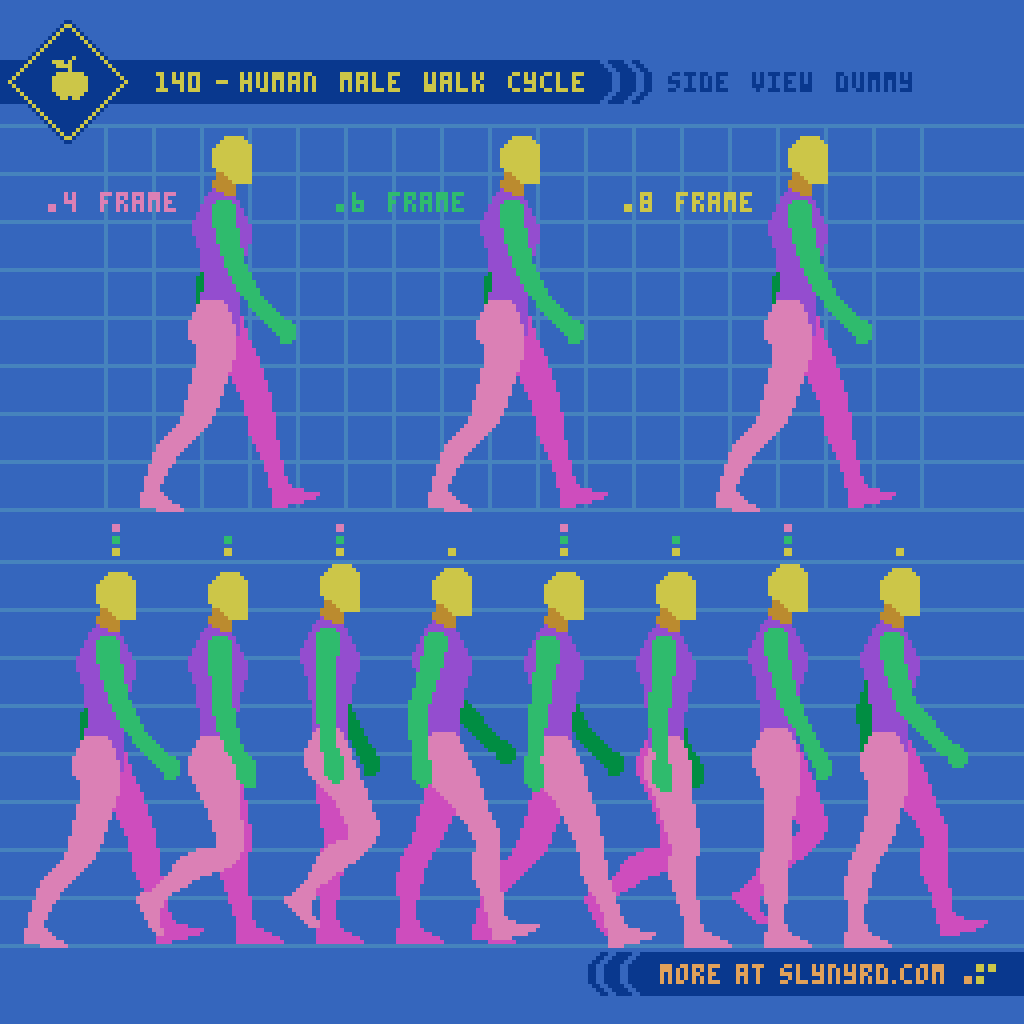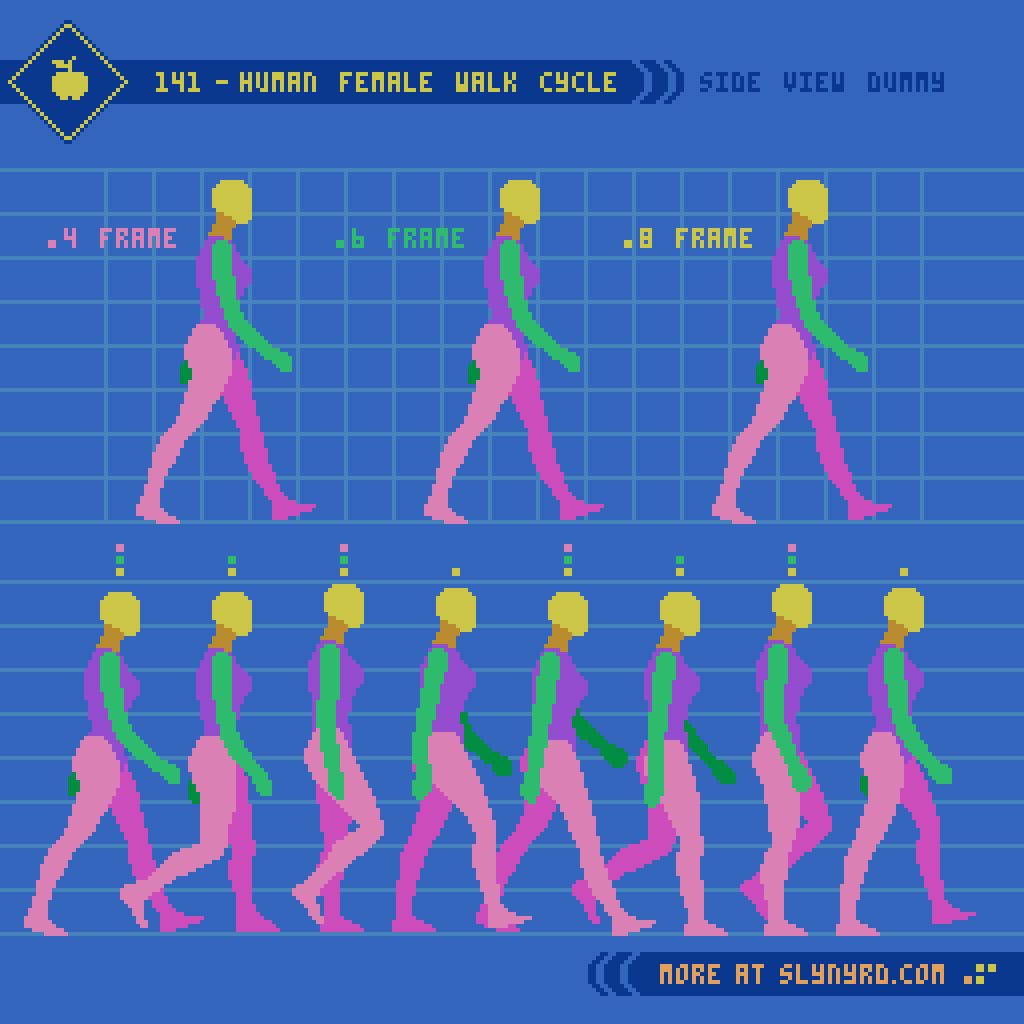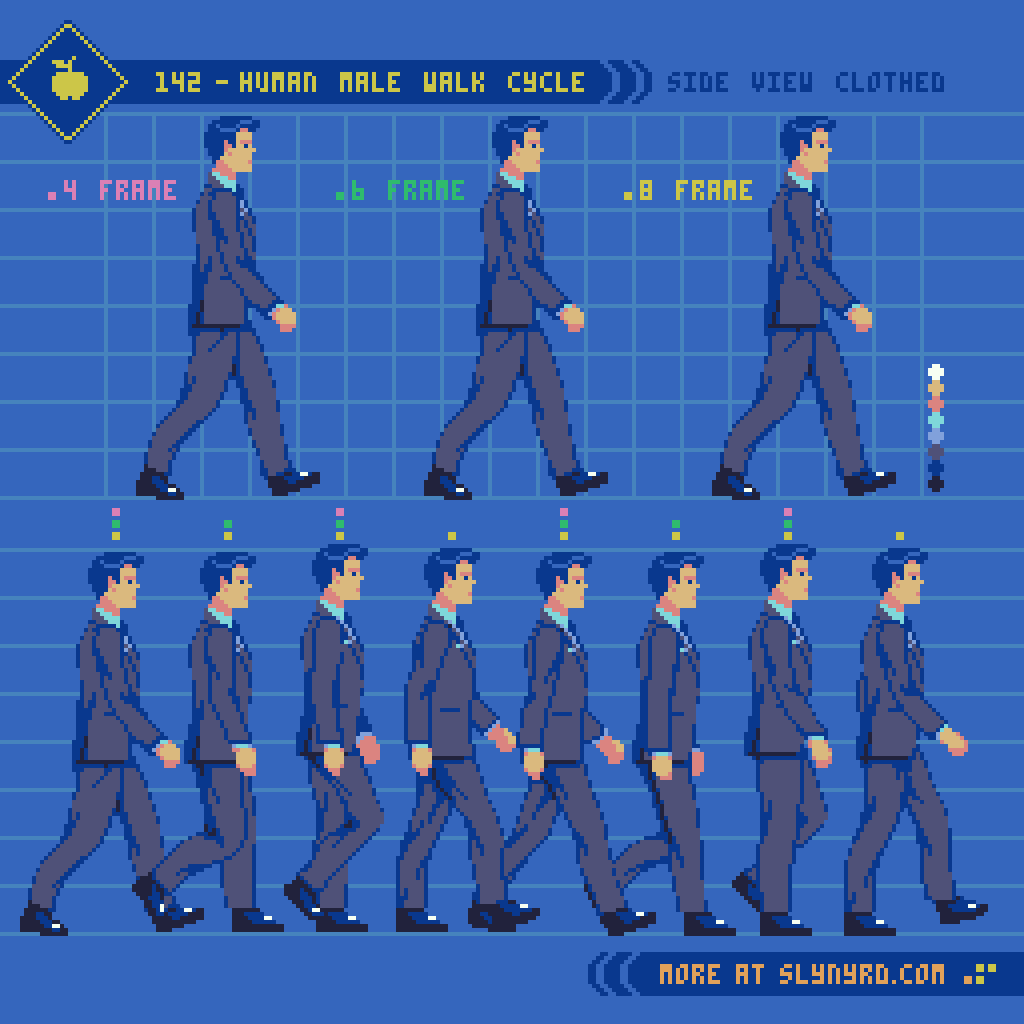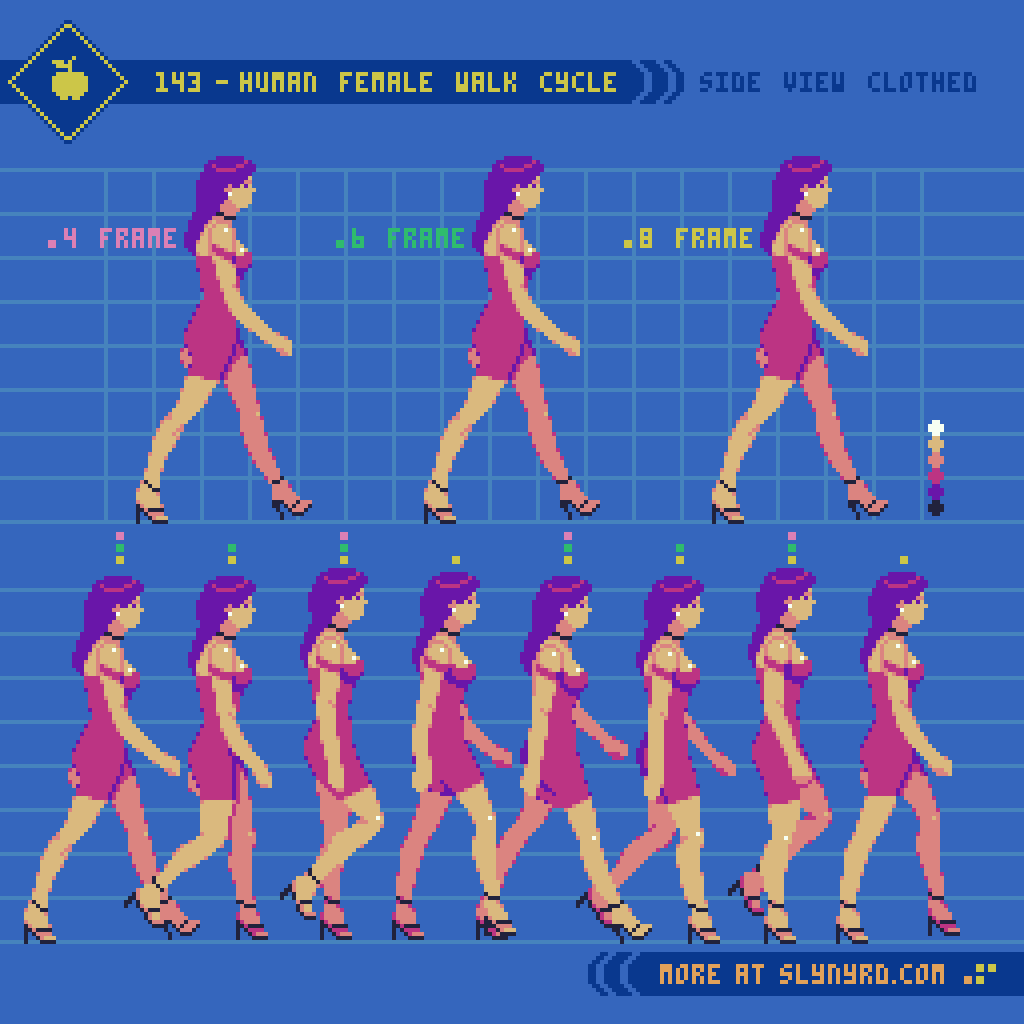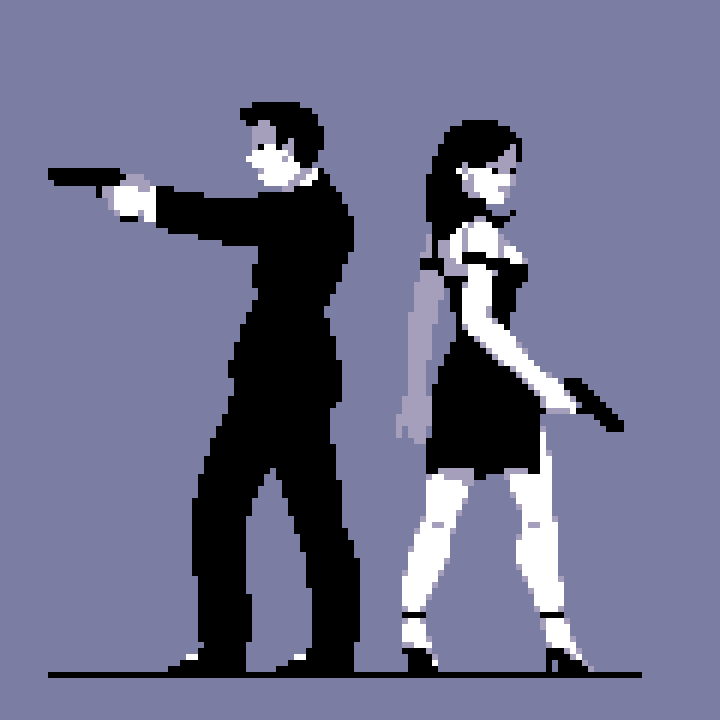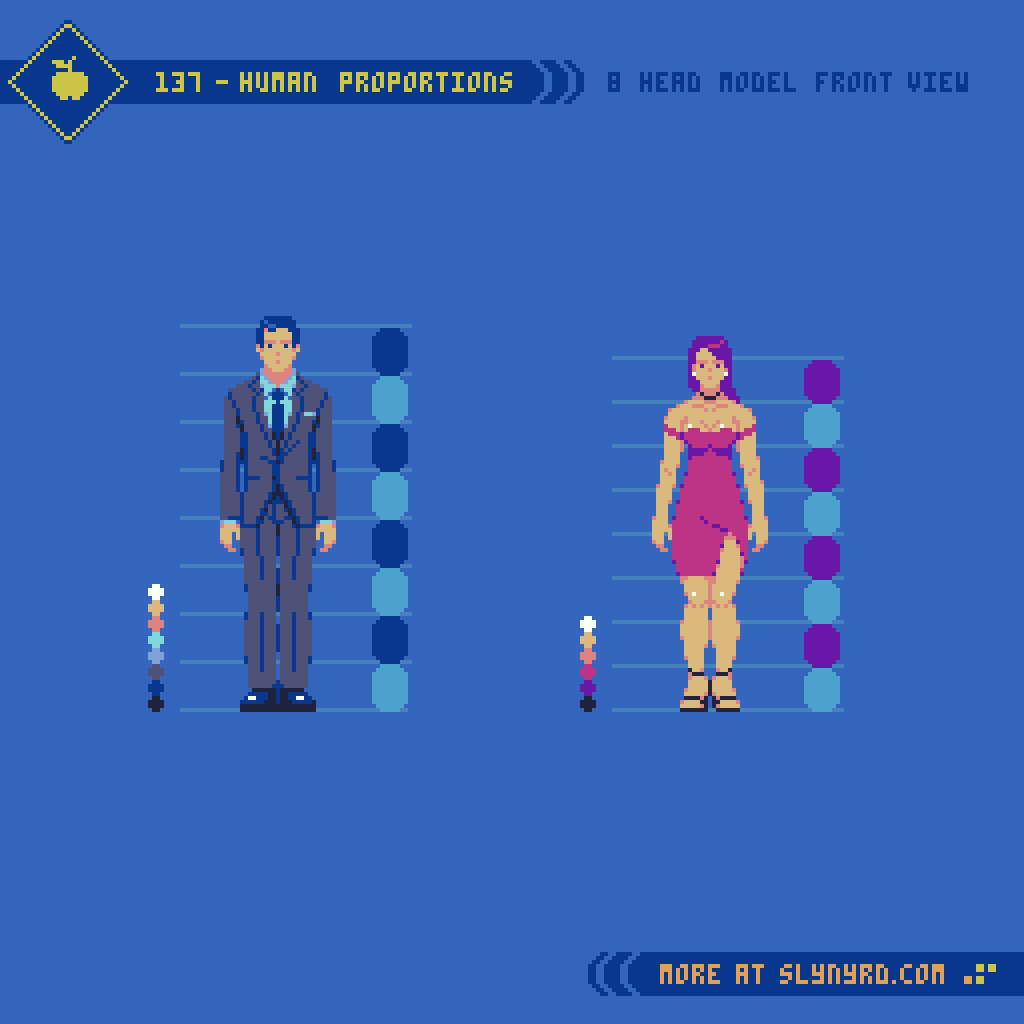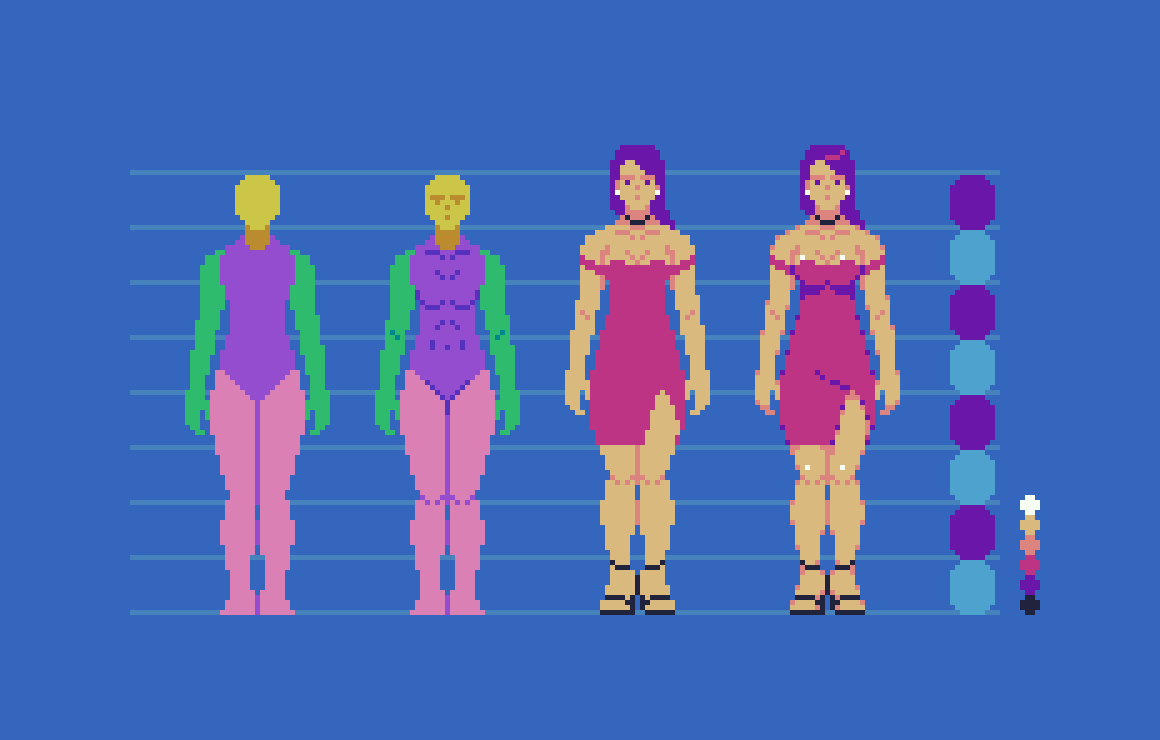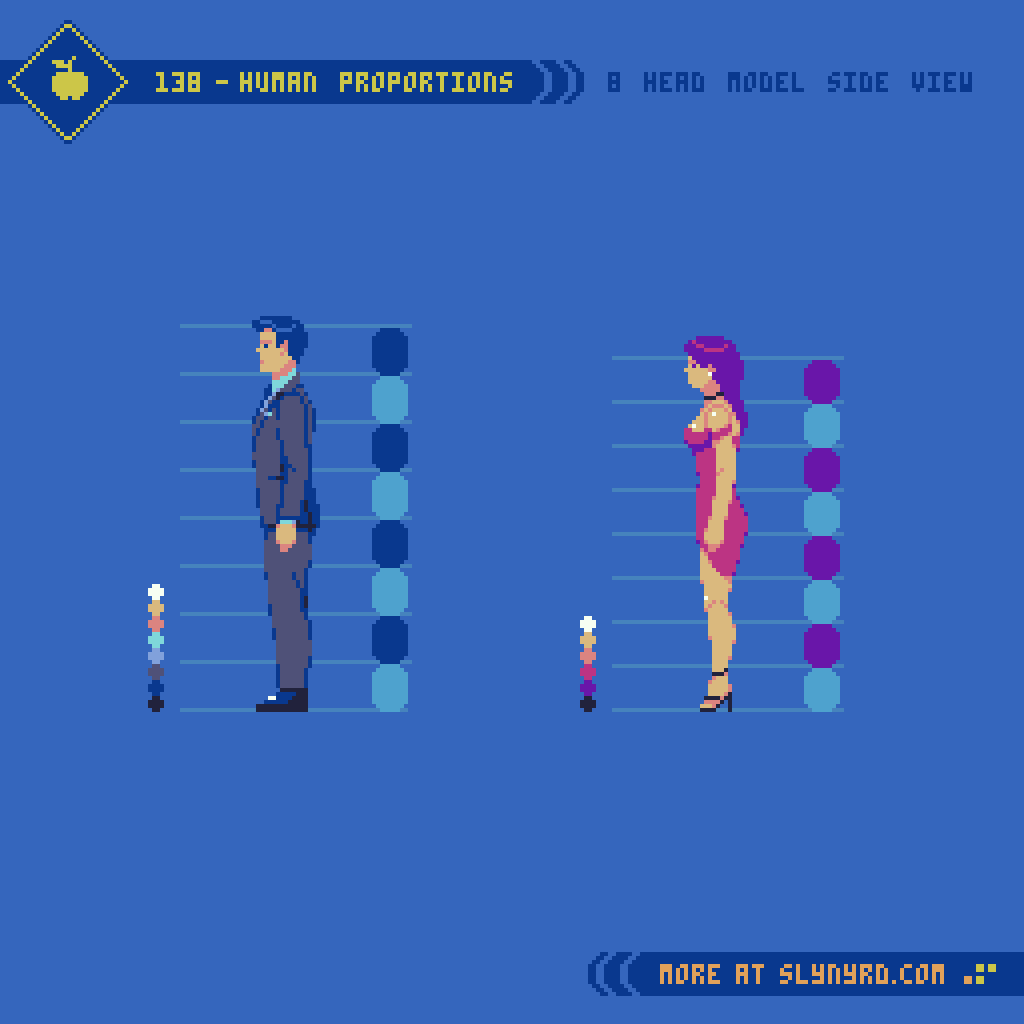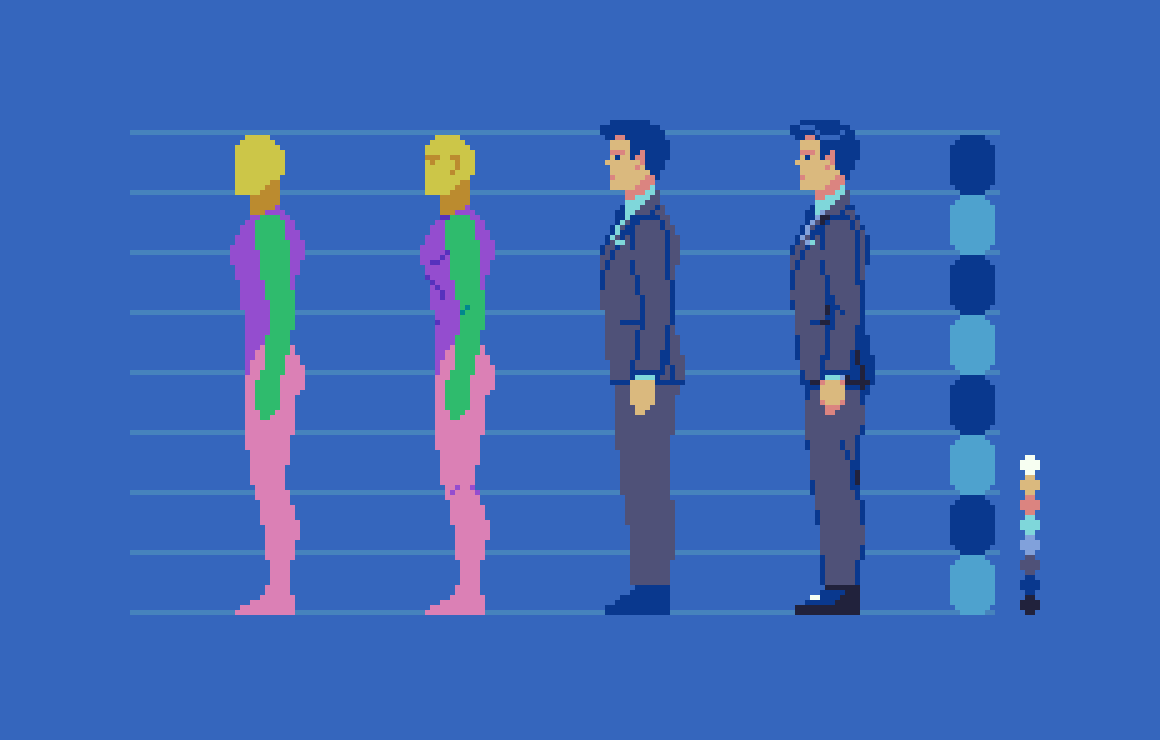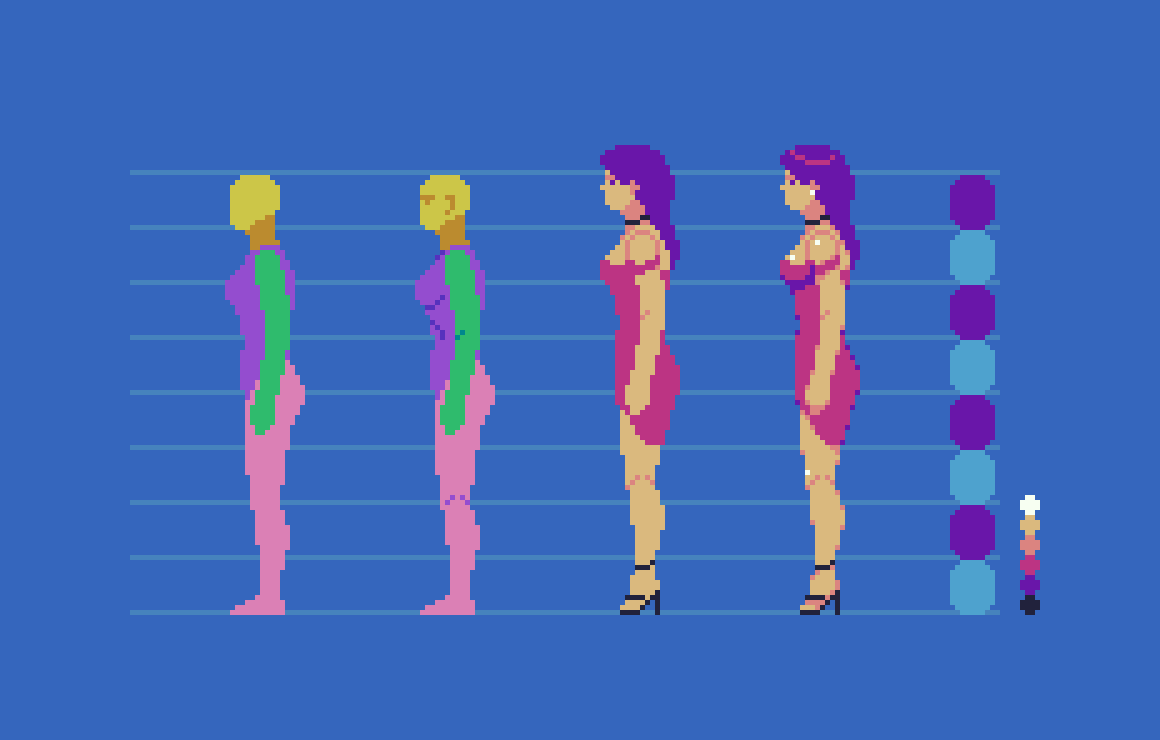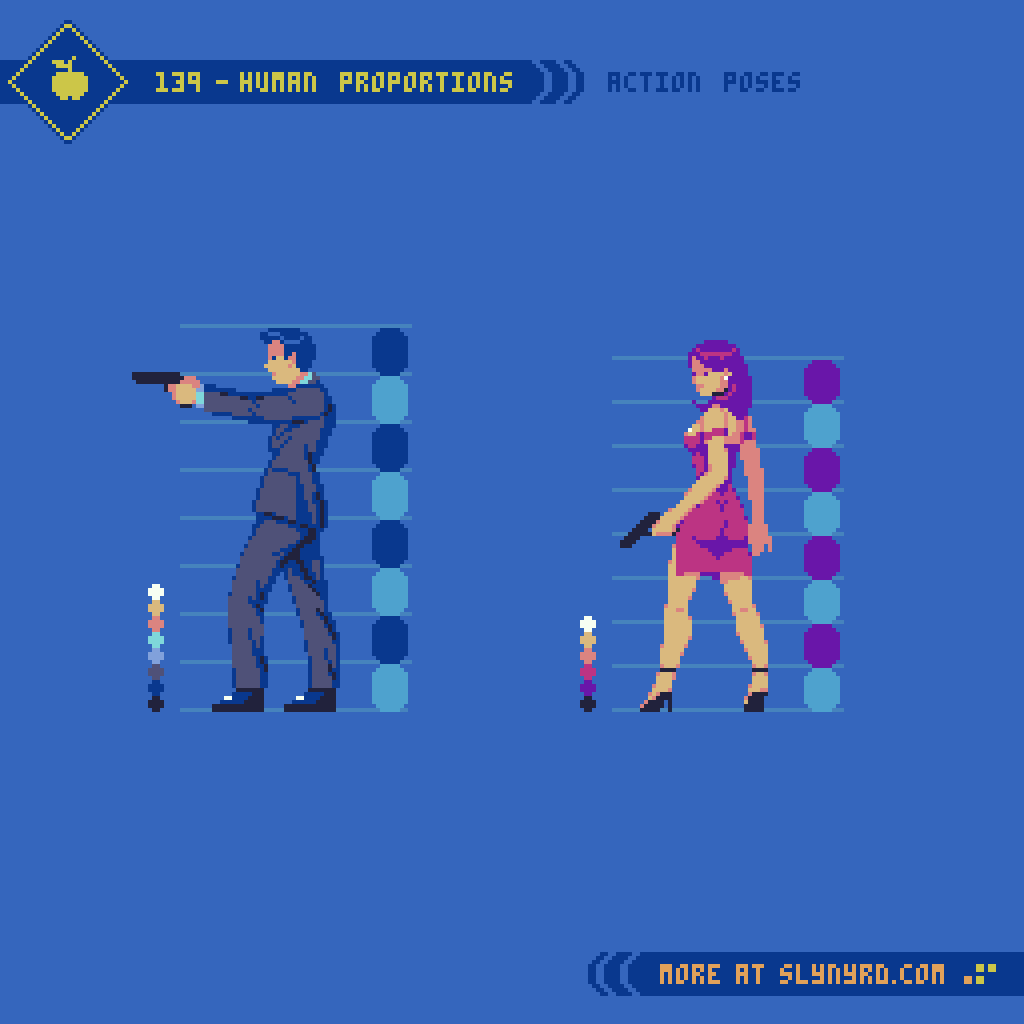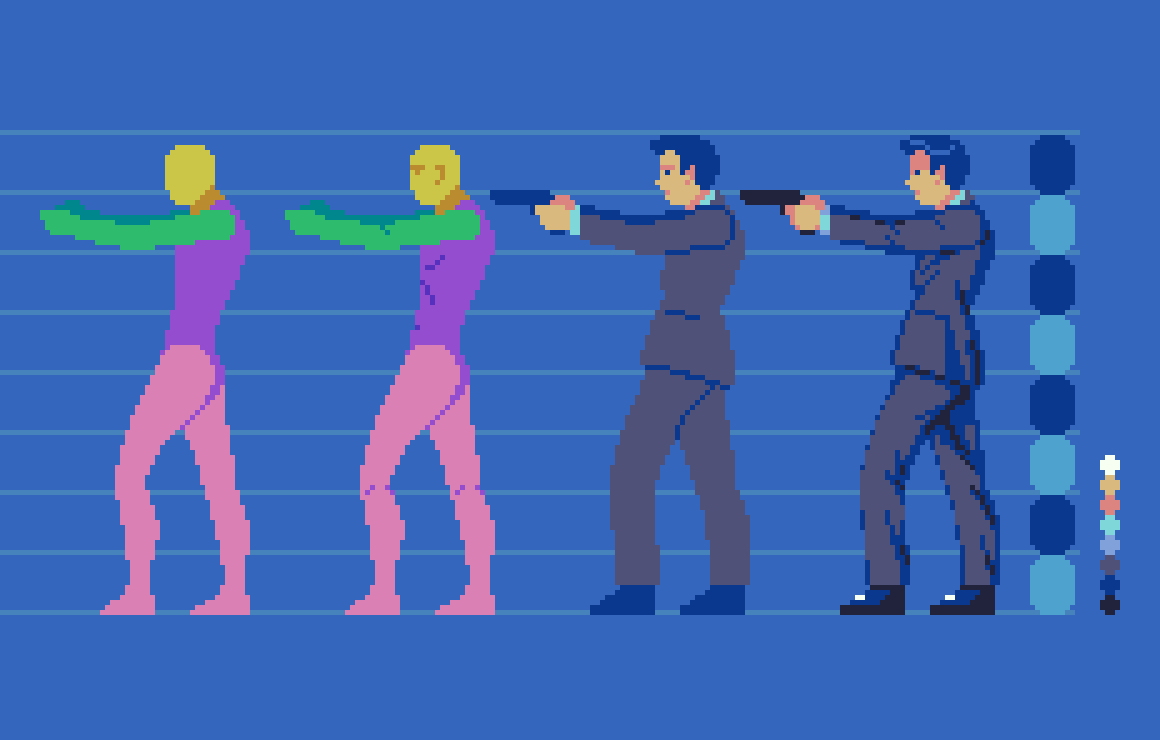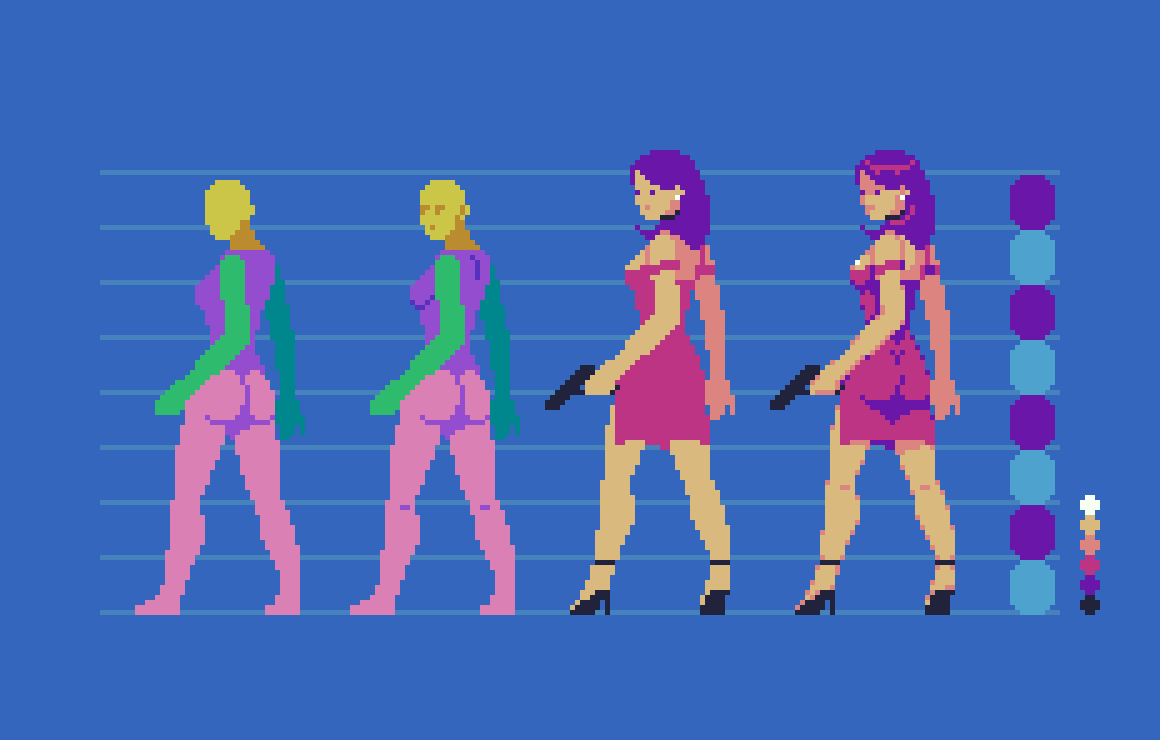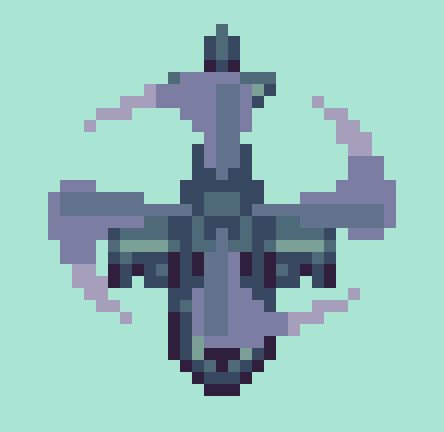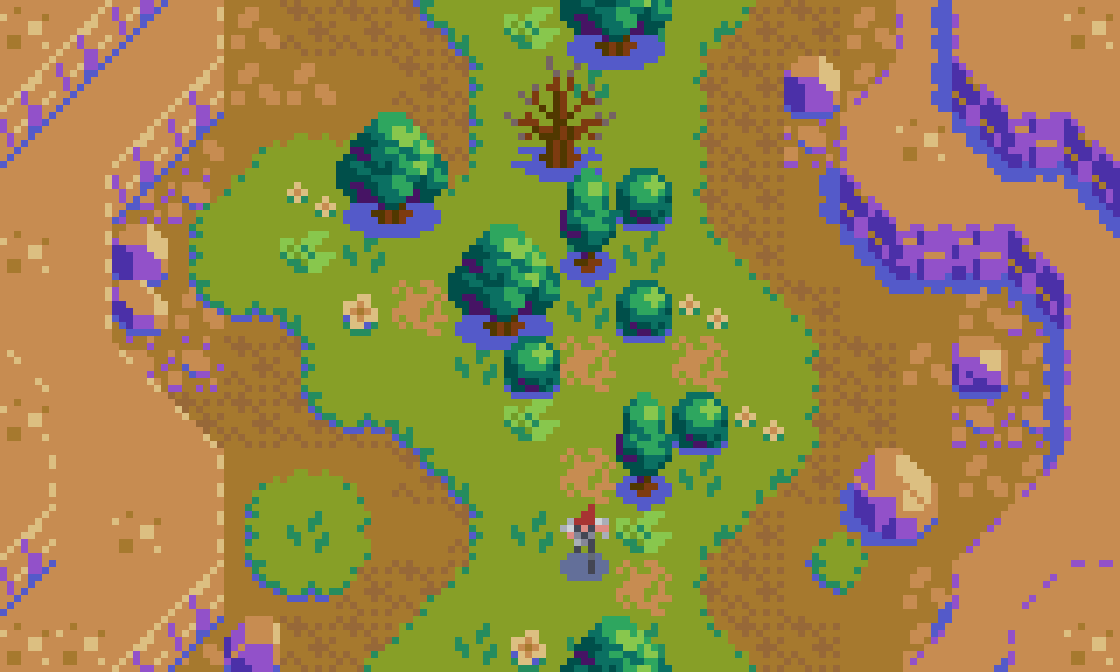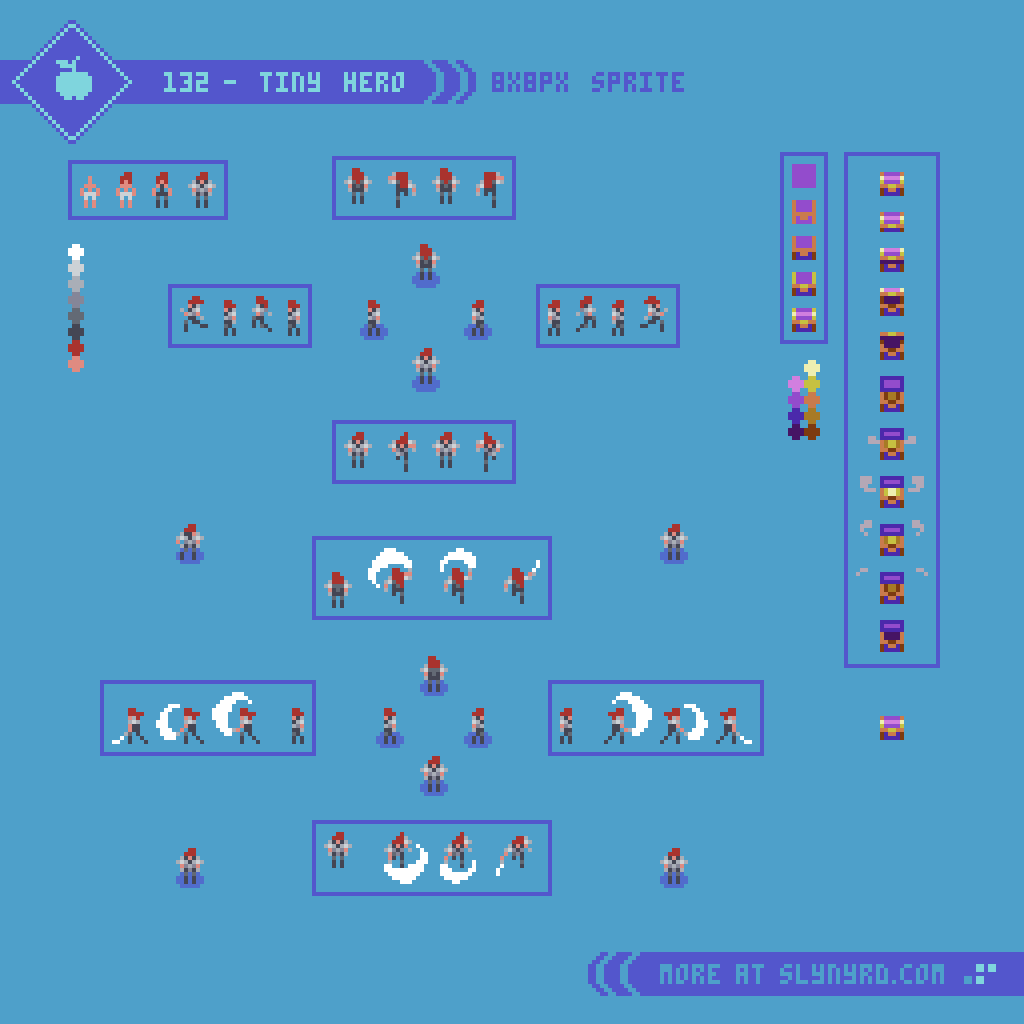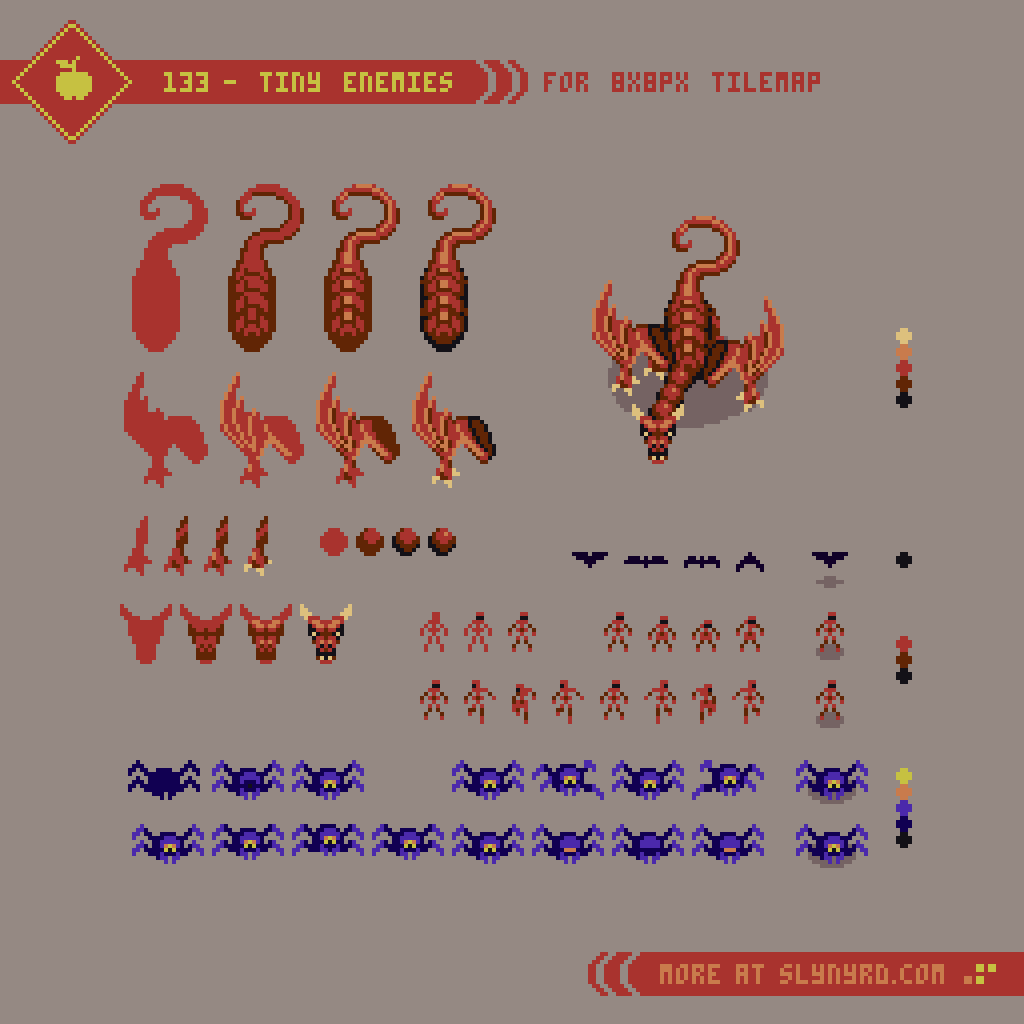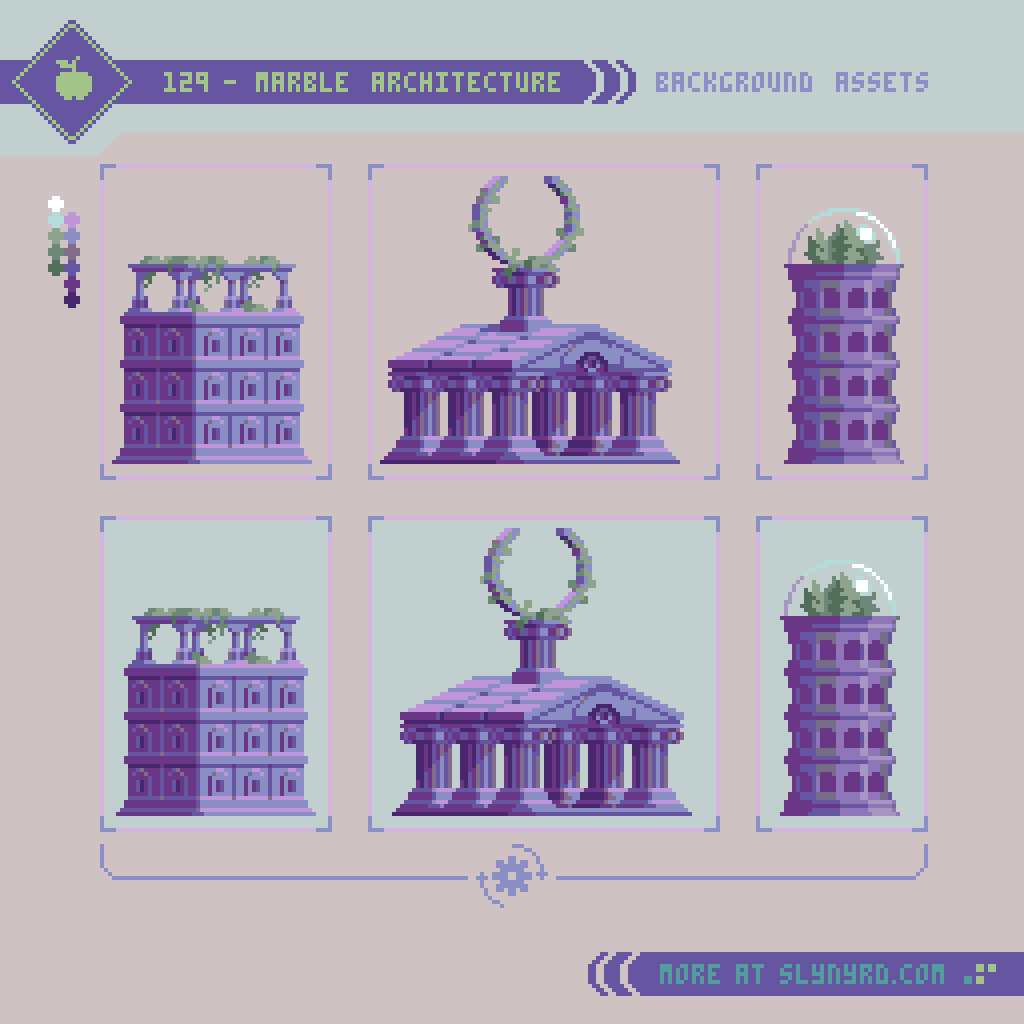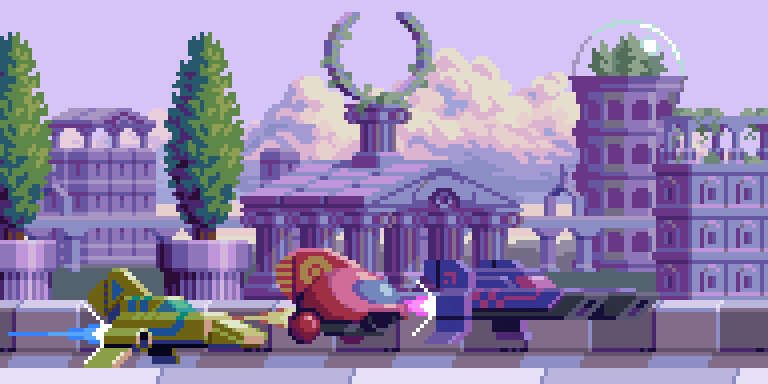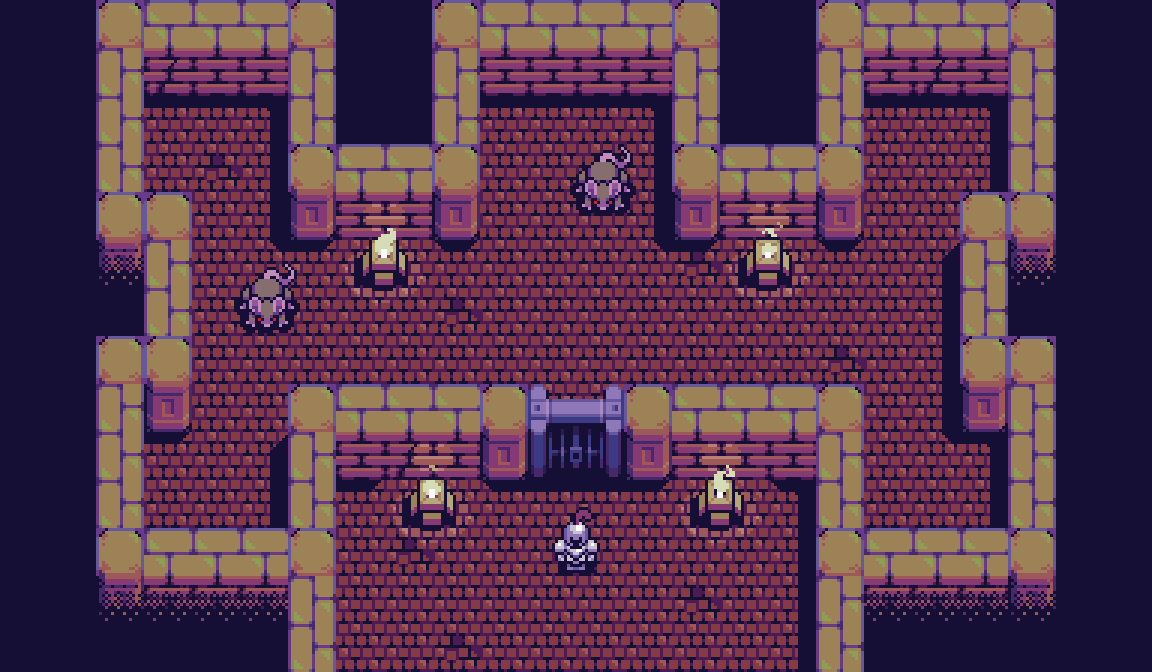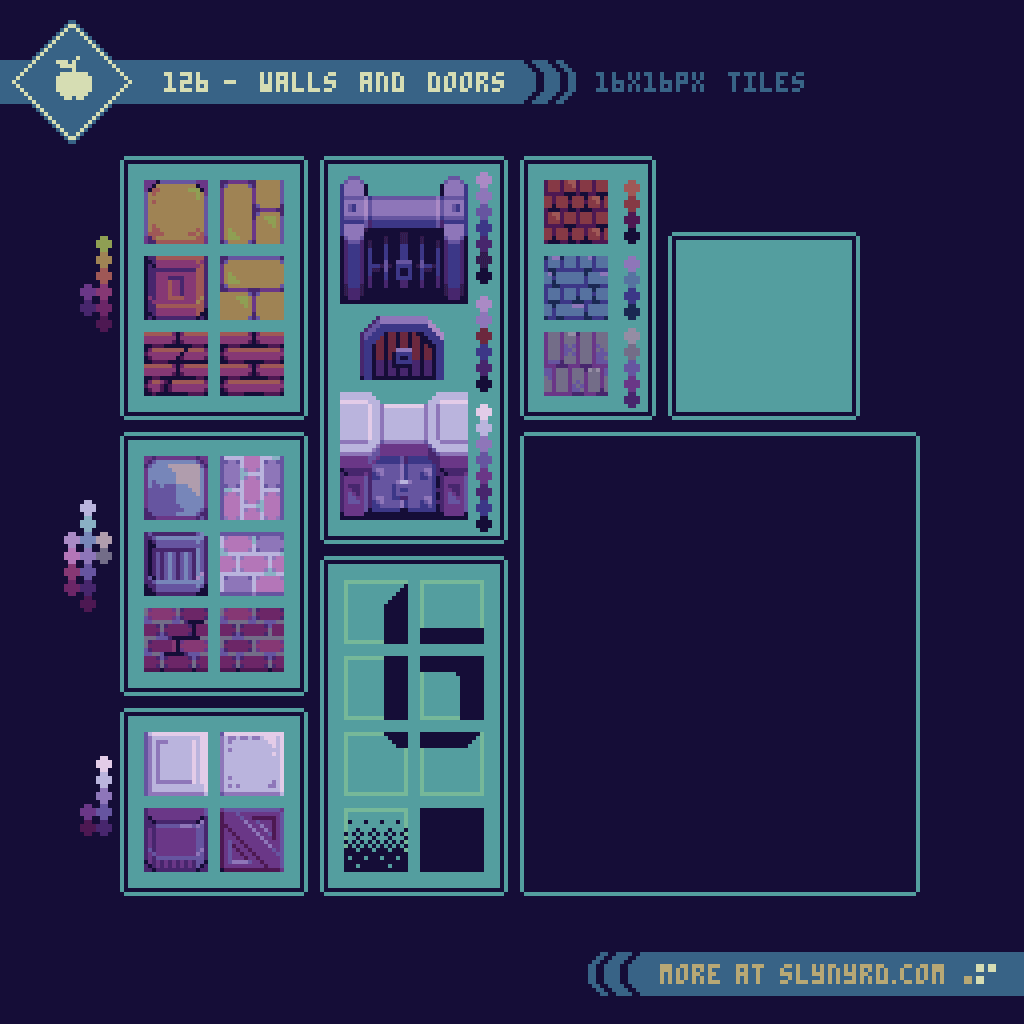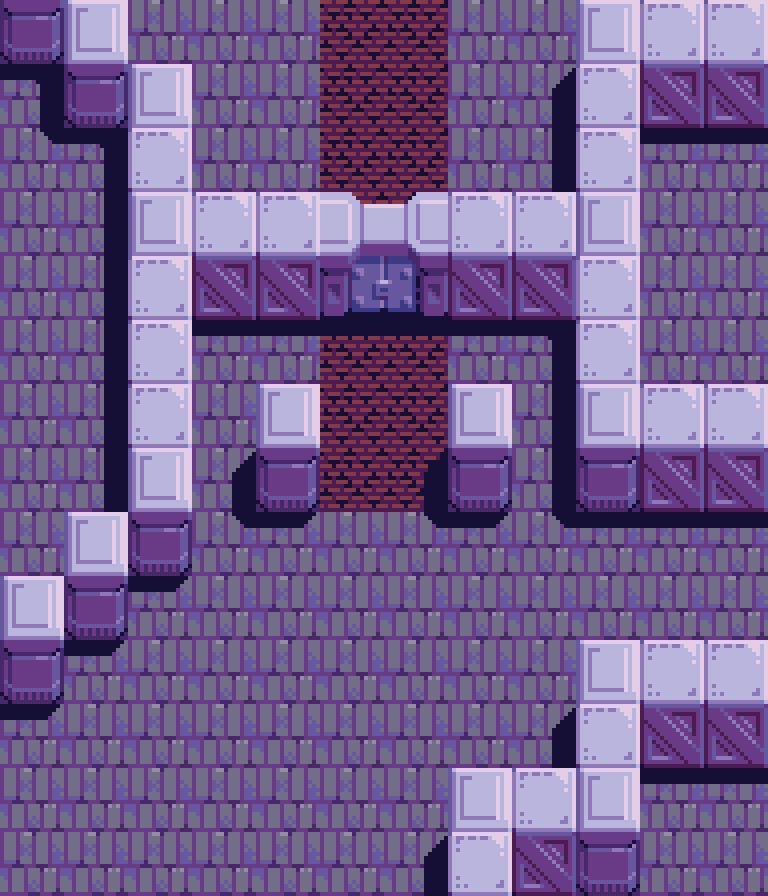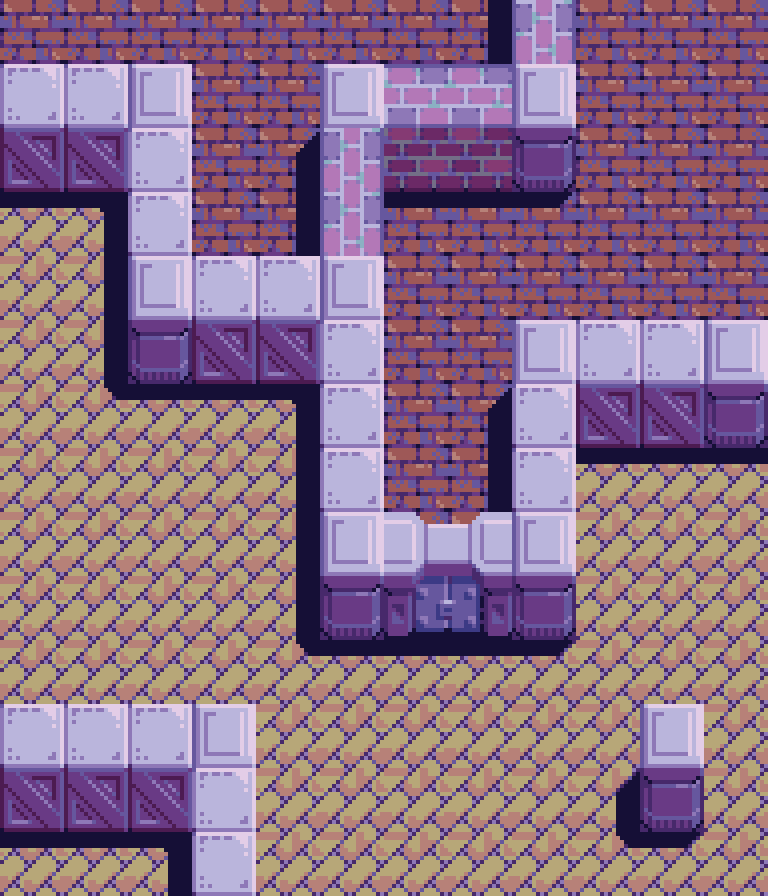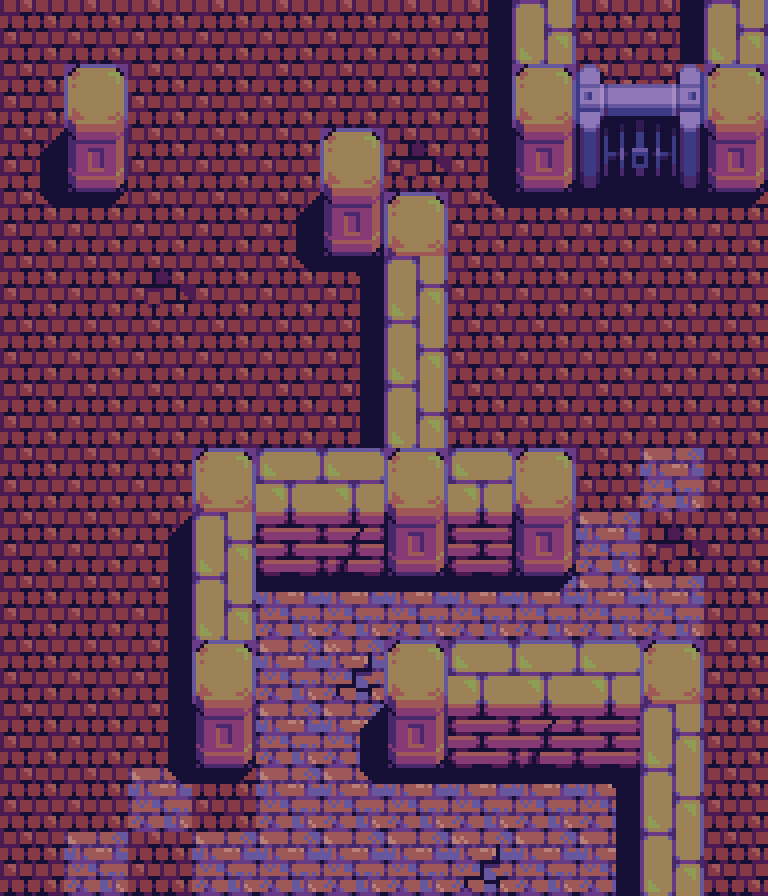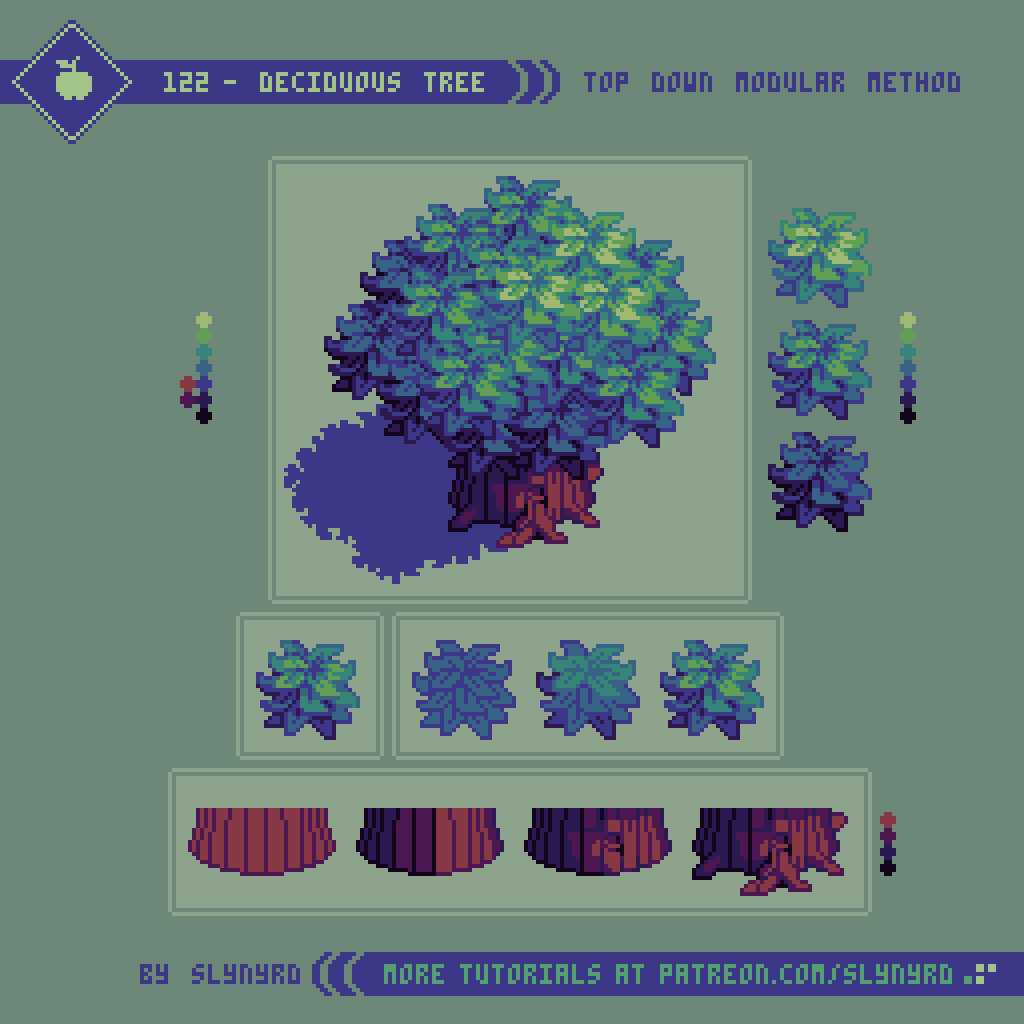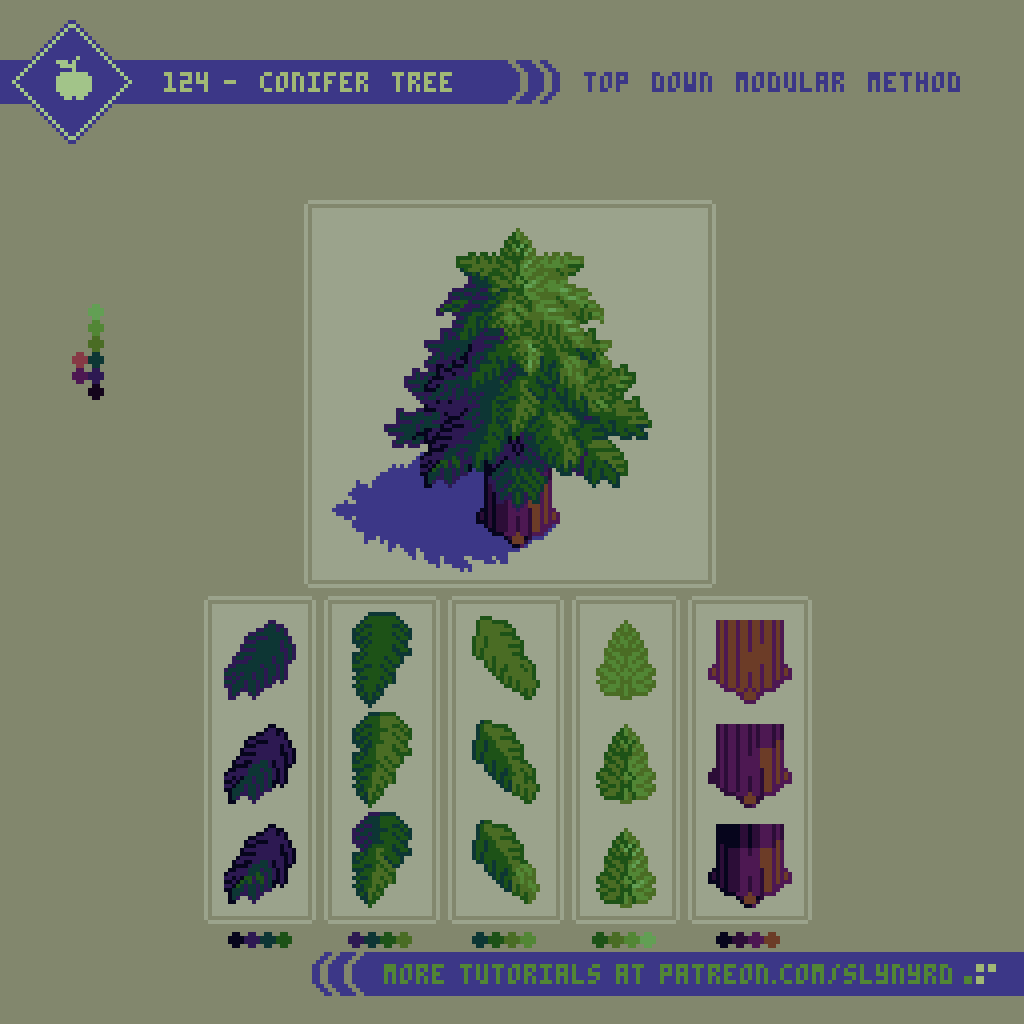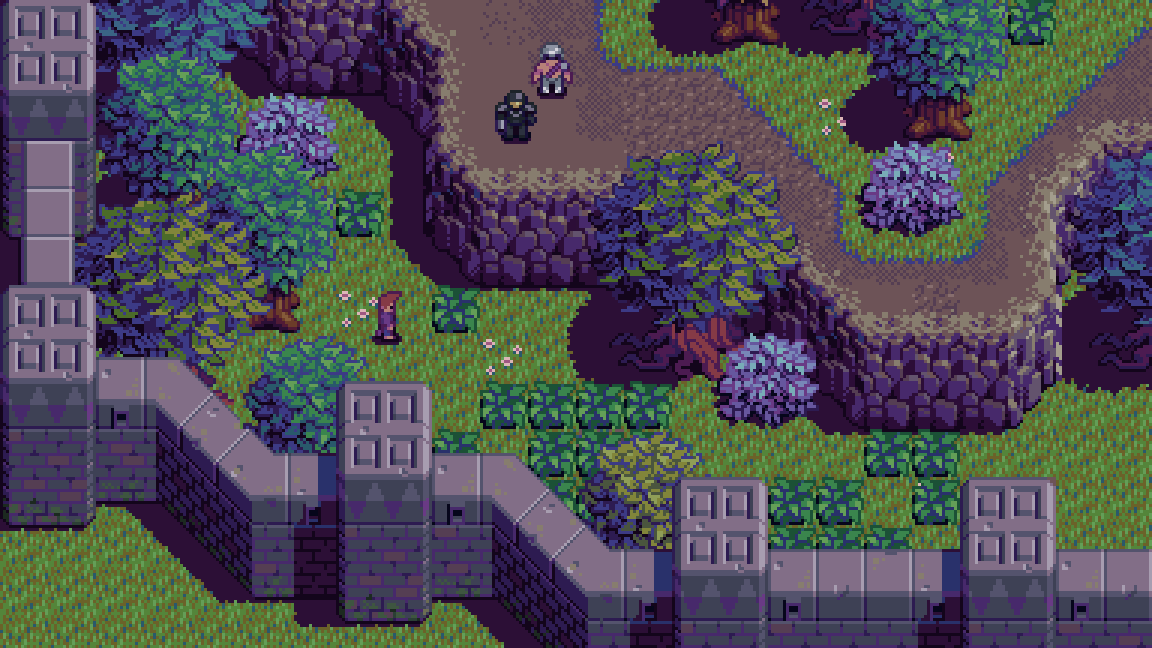Intro
Welcome to my first Pixel Diary. The goal here is to provide a deep dive into my thought process behind the art. In this entry, I dig into the art presented in Pixelcast 47. The fast action of the timelapse is enthralling, but when the dust settles, many are still left wondering how the sausage is actually made. Particularly, on a cognitive level. Well, I’ll attempt to answer that question, as I retrace my thoughts from over 13 hours of pixeling. An attention span is required. Any hardy souls coming with me?
Concept
I came up with a vague plan, but wanted to keep it pretty open to spontaneity along the way. The vision swirling in my head was a zoomed out, top down view of a civilization that appears ancient, yet advanced. So, as I often do, I made some ambiguous doodles that leave much to interpretation. The numbers off to the side are from tallying up the time of the recording sessions. In case there is an issue with the recording, I average 30 minute bursts, so I don’t lose large chunks of footage. Over 13 hours in all!
The key elements I wanted to hit upon was a tower as a focal point, the implication of giants with a head on the tower or other body parts elsewhere, and a grand scale with a sense of depth. Definitely I'm influenced by my recent studies of scripture and ancient civilization. Furthermore, I wanted to make something that would fit into the world I'm developing for Death Vapor, which is about a civilization enveloped in sin and perverse technology. You'll see later in the process that I even reuse some assets from the game.
Process
First, you'll notice things look a little different than my previous time lapses. Since I recently ditched Adobe products, I'm now maining Aseprite for most of my pixeling needs. I'm using the minimal dark theme by Fe to replicate the feel of workspaces I'm more used to. I know some people adore the default pixel font UI, but something about it throws me off. The palette I'm using is Bright Future.
I start the process with a 256x256px canvas. I didn't have a definite plan for the composition, so I start with a mid-size square canvas, which I can easily edit the size and proportions of as the vision forms. Even if I plan to make a large piece, I like to start on a smaller canvas, so I can establish style elements without getting overwhelmed. Style elements entail the color palette, perspective, and detail level of cluster work. It's good to have a rough idea for the composition from the start, but I usually establish these style elements before I get too involved with the comp. It depends on what you are trying to accomplish, a clear vision for the composition is more critical in something using realistic perspective, and dynamic figures.
Furthermore, you can see I establish several style elements with the creation of the first building, then I step it up with the tower. At 4:51, after I pretty well developed the tower, I start to visualize the overall composition and surrounding structures with basic line art. At this point, I was thinking to fill the entire scene with buildings on one ground level with the minimal warm color palette. While this would give a lot of city details to look at, I thought the composition would be uninteresting, and too many similar elements would detract from the grandness of the tower. So, from about 5:00 to 6:00 my idea was to fill the bottom corner of the canvas with city and surround it with water. This would give a splash of complementary colors, but it wouldn't achieve the depth I was hoping for.
6:03: at this moment I had it. Instead of surrounding the city with water, I would make it floating in the sky, and put water elements inside the city. To accommodate the vision, I first expand the comp to a vertical orientation to allow a good view of the sky layers and distant ground beyond. Most importune part of blobbing out the cloud layers and making the sky gradient is the colors. This is where I go off from the indexed palette most, creating more subtle steps in the gradient and cloud layers to achieve desired depth and sense of atmosphere. Generally, the colors become more more blue and desaturated as they recede into the background, while closer layers brighter and shifting towards yellow.
7:04: After introducing the 45 degree angles to the structures the projection appears oblique, or also referred to as military projection, which meshes with the straight on top down buildings, but not so much with isometric. Hence the revision of the bridge here.
7:48: My next ah ha moment- The head on the tower is just too bald, let's put a magnificent tree growing from the head, and fill the city with lovely vegetation. I hadn't thought of this in the sketches, as I originally was going for an oppressive vibe with everythign drenched in red light. However, after I introduced the sky background, the mood shifted to something more mysterious and wonderful. The vegetation helps blend together the juxtaposition of the red city on the blue background. I also wanted to elevate the tower for the sake of the composition without having to add to the structure.
I did a bit of off camera work on the tree and vegetation concept to work out the colors. I figured all that color sampling would result in indiscernible noise when sped up for the timelapse. However, I still want to mention it, so you know there is a thought process, and a lot of experimentation going on with color selection. I don't just magically have the final refined palette from the get go. Note, there are several color changes made throughout the entire process. I also made a subtle modification post recording, changing the dark wine color on the building to a more desaturated purple. I think this helped smooth out the color ramp and meshes better with the ambience of the sky background.
8:41: Small comp adjustment to allow more of the garden area to be shown, and put the tower off center for more interesting overall spacial balance.
9:23: Second pass at cloud details. This time i add a shade and highlight color to each layer. Colors have slightly less contrast with each layer into the background. I refined the shape and clusters with more precision. Using the circle shaped pencil tool, the circle sizes get smaller with each layer into the background to imply spacial depth.
10:50: The comps still felt a little off due to the lack of details on the left hand side of the city. I first toy with running a bridge off the canvas, but that felt dull and actually weakened the comp. I settled with a waterfall spilling into oblivion of the depths, and intricate openings and platforms across the side of the city.
11:21: I then move into a final pass of refinements and details across the entire city. Gateways for the main paths, various pillars and monoliths to fill in empty spaces, more openings, roofing elements, and brick details.
12:57: The ruined city background I created for Death Vapor is exactly what I wanted for the distant ground layer. So, I straight up imported some sections, changes the colors, and made some minor edits to hide repetition. Ta-da!
13:03: Final pass on cloud layers, polishing clusters and adding anti-aliasing to soften edges. This is nitty gritty stuff I find hard to put into words. Light source, the implied shape and texture, and a fair degree of subjective style all dictate the nature of the clustering. Just keep watching and you will notice a pattern.
16:10: A fleet of airships suddenly emerges from the clouds! I wanted to try the idea, but wasn't sure if I'd end up including them, and the recording was getting super long at this point, so I worked out the concept off camera. At least. I show the creation of one ship to give you the gist. They ended up being an important element that ties the whole composition together.
Conclusion
240x320px
30 colors
13 hours
Aseprite
I love epic concepts like this, and I greatly enjoyed the challenge. Pretty much every piece I make, I have doubts somewhere in the middle of the process. This was no different, and I was especially uncertain about the composition right up to the end. I fiddled with the canvas size and position of the city off camera numerous times, but kept going back to what you see in the video. Through experience, I knew if I just stayed the course, things would eventually fall into place. Channeling a vision can be a wild ride, and sometimes I feel like I'm just along for the ride. I was enlightened by the depth of emotions that developed through the process. What started minimal in execution and breadth of expression, blossomed into something complex and ironic. There is a fearful element to the city and its potential denizens, yet it welcomes with its grandeur and gardens. The calming effect of viewing a sweeping natural vista from elevation is subtly undermined by ruined civilization below. Yeah, I've been in my own head for too long. Let me know you thoughts and observations. Still have questions? Let me know. Leave a comment here, or on Youtube.
Thank you so much for going on this journey with me. If you are still reading you must be one of few.
Support
I run a one man show, and content like this takes a great amount of time and effort. If you appreciate my work, please considering supporting me.
Patreon
Donate
Shop
Thank you!
-Raymond Schlitter

















